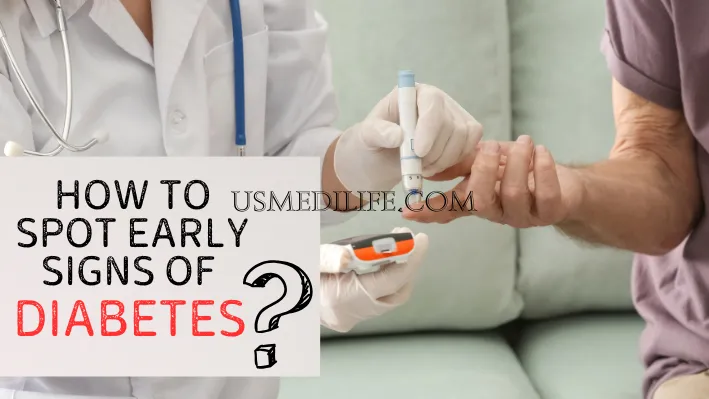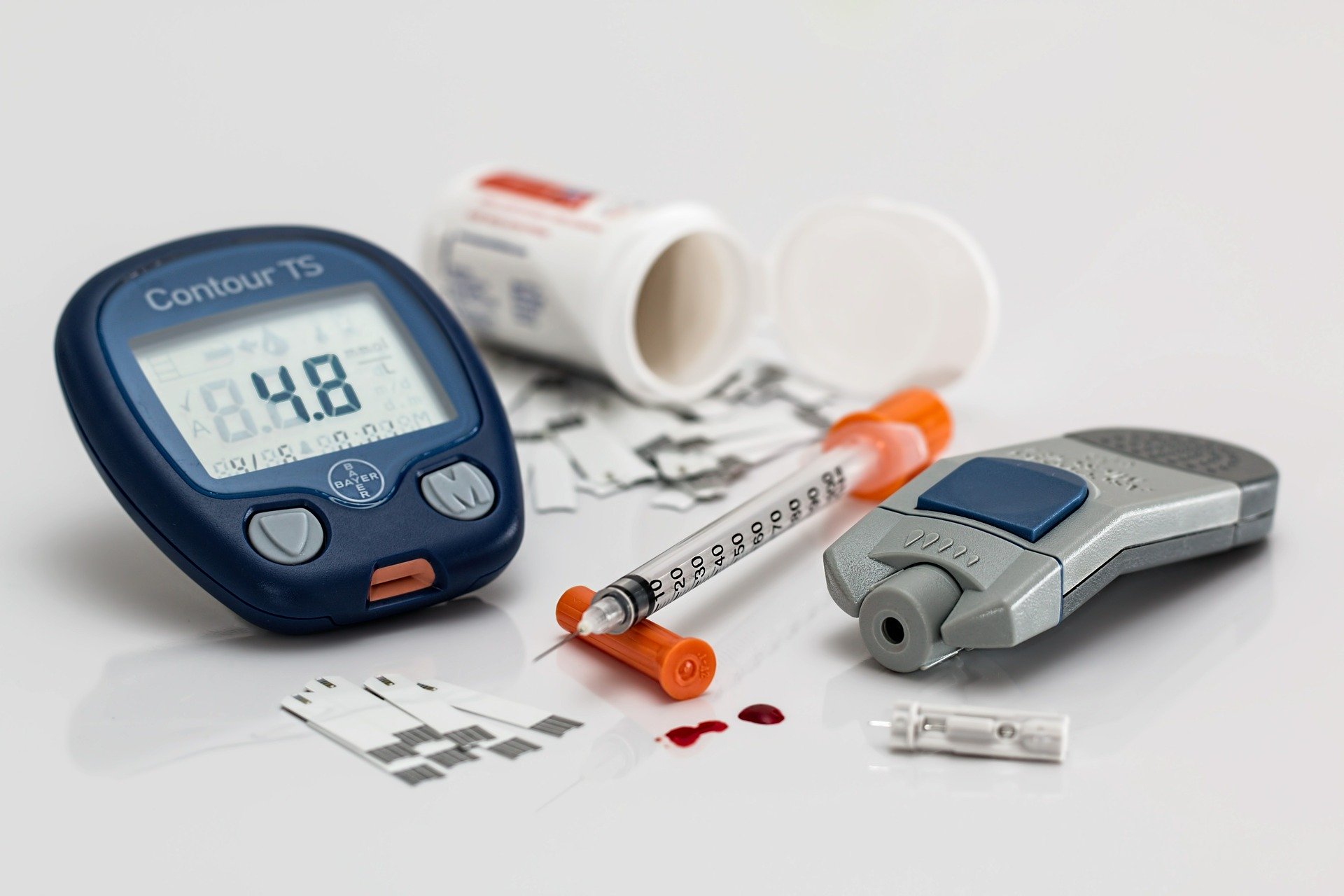
Dr. Ashwini
28-03-2025
How to Spot Early Signs of Diabetes (And What to Do Next): A Comprehensive Guide
Diabetes isn’t always a loud intruder sometimes it tiptoes into your life, masquerading as everyday quirks like thirst or tiredness. Left unchecked, it can quietly escalate into a serious health challenge, affecting everything from your heart to your eyesight. The silver lining? Catching it early gives you a powerful edge whether to manage it, reverse its trajectory, or prevent complications.
So, how do you recognize the subtle signals your body might be sending, and what’s the smartest next step if you spot them? This guide dives deep into the early signs of diabetes, unpacks the science behind them, and lays out a clear, detailed plan to take control. Let’s get started.
Understanding Diabetes: The Basics You Need to Know
Diabetes is a chronic condition rooted in how your body handles glucose your primary energy source derived from food. Normally, insulin, a hormone produced by the pancreas, acts like a key, unlocking cells so glucose can enter and fuel them. When this system falters, blood sugar climbs, setting the stage for trouble. There are three key players:
- Type 1 Diabetes: An autoimmune condition where the pancreas stops producing insulin, often striking in childhood or adolescence. It’s less common, accounting for 5-10% of cases.
- Type 2 Diabetes: The body either resists insulin’s effects or doesn’t produce enough, typically linked to lifestyle factors like diet and inactivity, though genetics play a role. It’s the most prevalent form, making up 90-95% of diagnoses.
- Prediabetes: A precursor state where blood sugar is elevated (100-125 mg/dL fasting) but not yet diabetic think of it as a critical warning zone.
Why does early detection matter? Over time, high glucose damages blood vessels and nerves, risking heart disease, kidney failure, or blindness. The American Diabetes Association notes that 1 in 3 adults with prediabetes don’t know they have it spotting the signs could be your first line of defense.
The Early Signs of Diabetes: What to Look For

Diabetes whispers before it shouts. These symptoms might seem trivial alone, but together, they paint a picture worth investigating. Here’s a detailed breakdown:
1. Unquenchable Thirst (Polydipsia)
- The Science: Excess glucose in your blood acts like a sponge, pulling water from your tissues into your bloodstream to dilute it. Your brain senses dehydration and screams, “Drink!”
- What It Feels Like: Not just “I could use a sip” it’s a persistent, nagging thirst, even after guzzling water. Your mouth might feel cottony or sticky.
- Red Flag: If you’re chugging liters daily and still parched, it’s more than hot weather.
2. Frequent Urination (Polyuria)
- The Science: High blood sugar overwhelms your kidneys, which filter glucose. When levels exceed 180 mg/dL (the renal threshold), sugar spills into urine, dragging water along via osmosis cue the constant peeing.
- What It Feels Like: You’re dashing to the bathroom every hour, or waking up 3-4 times at night (nocturia). It’s not just a small bladder it’s excessive volume.
- Red Flag: Nighttime trips disrupting sleep are a classic early hint.
3. Exhaustion That Drags You Down
- The Science: Without insulin shuttling glucose into cells, your energy tank runs dry. Mitochondria the cell’s power plants starve, leaving you sluggish.
- What It Feels Like: Bone-deep fatigue, even after 8 hours of sleep or a restful weekend. It’s not “I’m busy” it’s “I can’t get off the couch.”
- Red Flag: Pair this with other signs it’s a hallmark of sugar mismanagement.
4. Blurry Vision That Comes and Goes
- The Science: High glucose shifts fluid in your eye’s lens, altering its shape and bending light improperly. It’s temporary but telling.
- What It Feels Like: Words on a page fuzz out, or distant signs blur, then clear up later. It’s not eyestrain it’s erratic.
- Red Flag: If glasses don’t fix it and it fluctuates, sugar’s a suspect.
5. Hunger That Defies Logic (Polyphagia)
- The Science: Starved cells signal your brain for more fuel, even if you just ate. Insulin resistance or deficiency keeps glucose locked out.
- What It Feels Like: You’re ravenous 30 minutes after a full meal cravings hit hard, especially for carbs.
- Red Flag: It’s not willpower it’s physiology gone haywire.
6. Slow-Healing Wounds
- The Science: Elevated sugar impairs blood flow and white blood cell function, stalling tissue repair. Inflammation lingers.
- What It Feels Like: A paper cut festers for weeks, or a bruise won’t fade. Infections might creep in.
- Red Flag: Healing that drags past 10-14 days isn’t normal.
7. Tingling or Numbness in Extremities
- The Science: Early neuropathy nerve damage from glucose toxicity disrupts signals in hands or feet.
- What It Feels Like: Pins-and-needles, burning, or a “fallen asleep” sensation without pressure or injury.
- Red Flag: It’s subtle but persistent not just from sitting too long.
8. Dark Skin Patches (Acanthosis Nigricans)
- The Science: Insulin resistance spikes insulin levels, thickening and darkening skin in folds like the neck, armpits, or groin.
- What It Feels Like: Velvety, brownish-black patches you can’t wash off more than a tan.
- Red Flag: A visual cue tied to Type 2 risk, especially if overweight.
Are You at Risk? A Deeper Look
Symptoms alone don’t tell the full story your risk profile sharpens the lens:
- Genetics: A parent or sibling with diabetes doubles your odds Type 2 has a 40% heritability rate.
- Body Weight: Excess visceral fat (around organs) drives insulin resistance BMI over 25 or waist above 35” (women) / 40” (men) flags risk.
- Age Factor: Risk jumps after 45 as insulin sensitivity dips, though Type 2 now hits younger adults.
- Lifestyle Triggers: Sedentary days, high-sugar diets (soda, pastries), or smoking impair glucose control.
- Health Clues: Hypertension (130/80+), high triglycerides, low HDL, or PCOS amplify vulnerability.
Two or more risk factors plus symptoms? Don’t wait act.

What to Do Next: Your Detailed Action Plan
Suspicious? Here’s how to confirm and respond with precision:
1. Self-Test for a Quick Clue
- Tool: Buy a glucometer (under $20 at pharmacies) and test strips.
- How:
- Fasting Check: After 8 hours without food normal is <100 mg/dL; 100-125 is prediabetes; 126+ is suspect.
- Random Check: Anytime with symptoms 200+ mg/dL is a red alert.
- Why: It’s not definitive but signals urgency log results for your doc.
2. Visit a Healthcare Provider
- Tests to Request:
- Fasting Plasma Glucose (FPG): <100 mg/dL is normal; 100-125 is prediabetes; 126+ (twice) confirms diabetes.
- HbA1C: A 3-month sugar average <5.7% is normal; 5.7-6.4% is prediabetes; 6.5%+ is diabetes.
- Oral Glucose Tolerance Test (OGTT): After a sugar drink, <140 mg/dL is normal; 140-199 is prediabetes; 200+ is diabetes.
- Why: These pinpoint type and severity Type 1 needs insulin fast; Type 2 might start with lifestyle or meds.
- Prep: Bring symptom notes and family history details matter.
3. Revamp Your Diet Immediately
- Cut Out: High-glycemic index (GI) foods white rice (GI 89), soda (GI 63) spike sugar fast. Processed carbs and dairy (insulinogenic) are culprits too.
- Embrace: Low-GI picks like quinoa (GI 53), leafy greens, berries, plus fiber (25-30g daily) to slow absorption. Add lean proteins (turkey, lentils) and fats (olive oil, almonds) for balance.
- Why: The Diabetes Prevention Program found a 58% risk drop with dietary shifts start now.
- Sample Day: Oatmeal breakfast, grilled chicken salad lunch, salmon with broccoli dinner.
4. Get Moving With Purpose
- Goal: 150 minutes weekly (30 min, 5 days) brisk walking (3-4 mph), cycling, or swimming. Add resistance (weights, push-ups) twice weekly.
- Science: Exercise boosts insulin sensitivity by 20-30% within days, shuttling glucose into muscles.
- Why: A 5-7% body weight loss (10-14 lbs for 200 lbs) slashes Type 2 risk by 50%.
- Start Small: 10-minute walks post-meals build from there.
5. Track and Analyze
- How: Use a journal or app note symptoms (e.g., thirst frequency), meals (carb counts), activity (minutes), and glucose readings.
- Why: Patterns emerge did sugar spike after pasta? Did exercise help? Data guides your doc to meds (e.g., metformin) or tweaks.
- Example: “Day 1: Thirsty 3x, ate rice, sugar 130 mg/dL fasting.”

If It’s Diabetes: Your Roadmap Forward
- Prediabetes: Reversible lose 5-7% weight, cut 500 calories daily, move more. Studies show 60% revert to normal sugar levels.
- Type 2: Manageable lifestyle plus metformin or GLP-1 drugs (if prescribed). Monitor A1C every 3 months.
- Type 1: Insulin therapy (injections or pump) endocrinologists tailor it. Blood sugar checks 4-10x daily.
- Long Game: Early control slashes complication risks heart attacks drop 39%, per the UKPDS study.
Prevention: Stay One Step Ahead
No signs yet? Fortify your defenses:
- Hydration: 2-3 liters water daily dilutes glucose, aids kidneys.
- Sleep: 7-9 hours sleep deprivation cuts insulin sensitivity by 25%.
- Screening: Annual A1C after 45 (sooner if risky) catches creepers early.
- Stress Less: Cortisol spikes sugar meditate 10 minutes daily.
Conclusion: Empowerment Starts Now
Diabetes doesn’t have to blindside you. Thirst that won’t quit, fatigue that lingers, vision that wavers these are your body’s early whispers. Listen, test, and act whether it’s a glucometer check, a doctor’s visit, or a plate of greens. With knowledge and hustle, you can steer your health back on track. Noticed any signs lately? Share below I’m here to cheer you on!
Here’s to early wins and lasting health!


